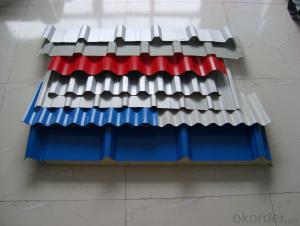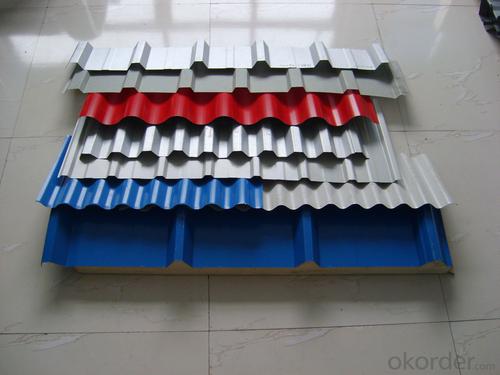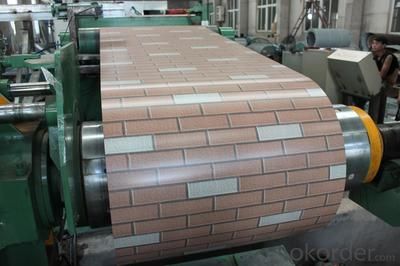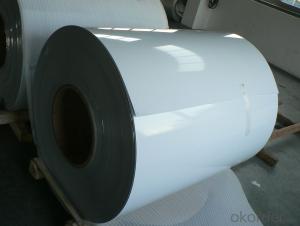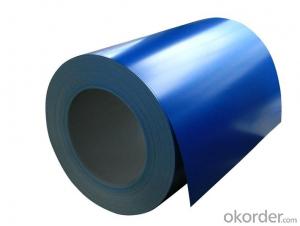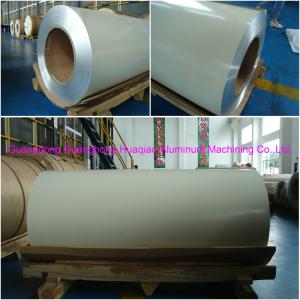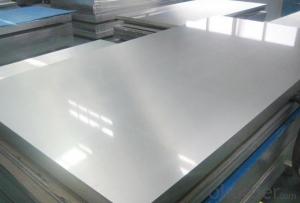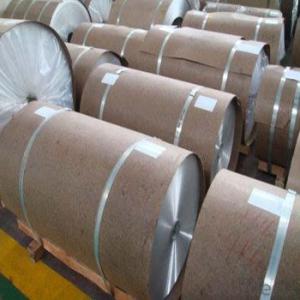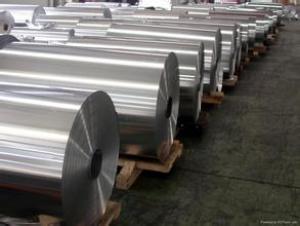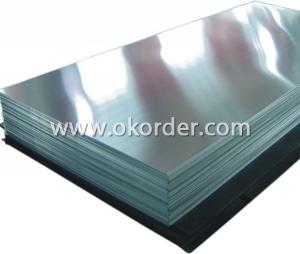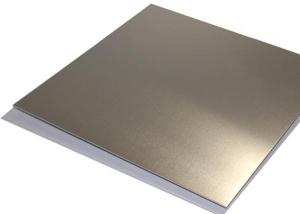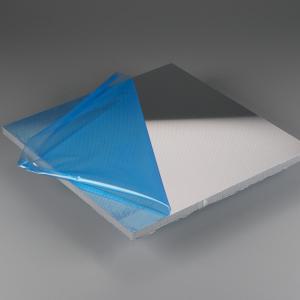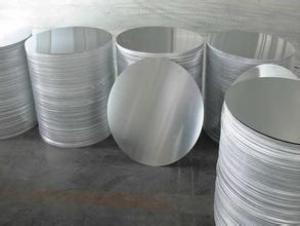Members Mark Aluminum Bake Sheets - Aluminium Power Coating in Coil Form with PE
- Loading Port:
- Shanghai
- Payment Terms:
- TT OR LC
- Min Order Qty:
- 8 m.t.
- Supply Capability:
- 1000 m.t./month
OKorder Service Pledge
OKorder Financial Service
You Might Also Like
Specification
Structure of Aluminium Power coating in Coil Form with PE Description:
Coated aluminum coil/sheet are of a wide range of colors, which gives wonderful appearance no matter in residential and commercial constructions of great exhibition centers.
The coated aluminum coil/sheet have been widely used in the fields of construction and decoration( garage doors, ceiling etc.), electronic appliances, lighting decoration, air-condition air pipes, sandwich panels and drainages etc.
Main Features of Aluminium Power coating in Coil Form with PE :
1) High flexibility
2) Impact resistance
3) Excellent weather-proof durability
4) Anti-ultraviolet
5) High erosion resist
Images of the Aluminium Power coating in Coil Form with PE:
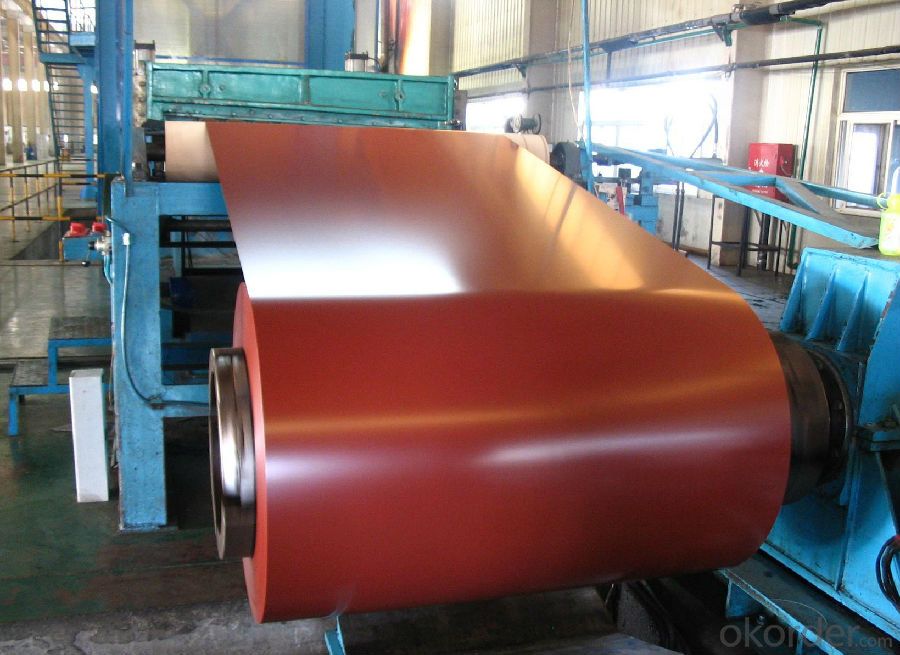
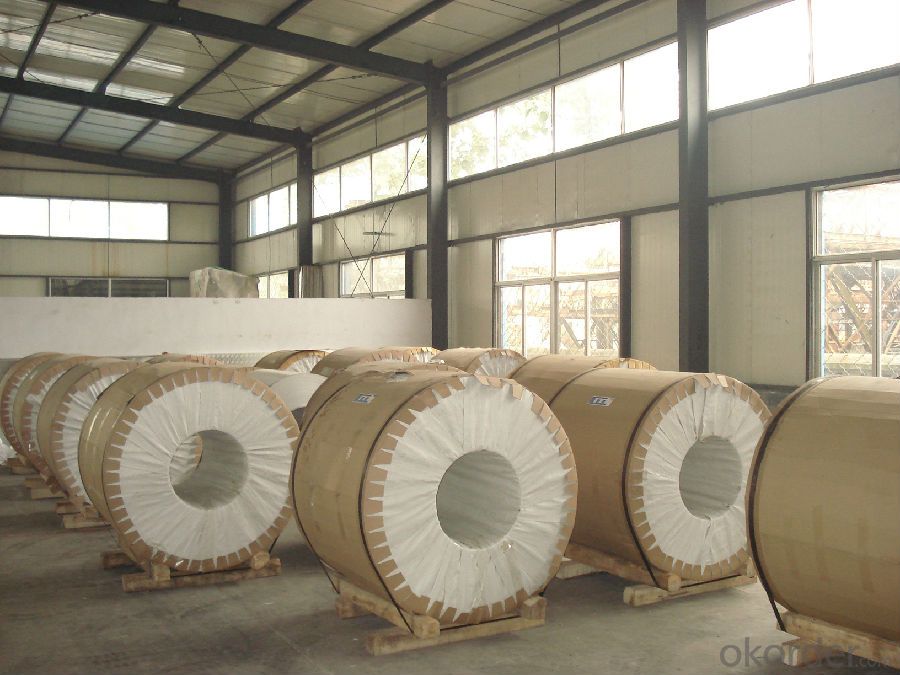
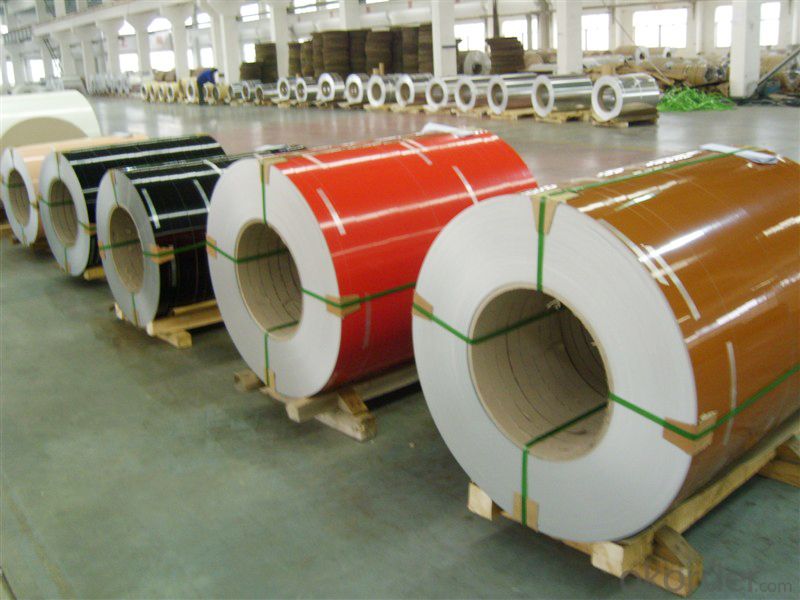
Aluminium Power coating in Coil Form with PE Specification:
Alloy | A1100,A3003,A1050,A8011 etc |
Temper | H16,H18,H24 |
Thickness | From 0.024mm to 1.2mm |
Width | Standard width:1240mm |
Special width:1300mm,1520mm,1570mm,1595mm | |
Diameter | Standard dia:1200mm |
Interior dia:150mm,405mm,505mm | |
Weight | 2.5 T/coil,3.0 T/coil |
Coating | PE, PVDF, AC |
Surface | Embossed, mill finish, coated |
Color | AS to code RAL |
Gloss | 10-90%(EN ISO-2813:1994) |
Coating Thickness | PE: more than 18 micron |
PVDF: more than 25 micron | |
Coating Hardness (pencil resistance) | More than 2h |
Coating adhesion | 5J(EN ISO-2409:1994) |
Impact Resistance | No peeling or cracking(50 kg/cm,ASTMD-2794:1993) |
Flexibility (T-bend) | 2T |
MEK resistance | More than 100 |
FAQ:
a.What is monthly capacity
---CNBM is one stated own company and our monthly capacity is about 2000tons.
b. Now which countries do you export your goods?
---Now we export to South East Asia,Africa, North America,South America ect.
- Q: Are 101 aluminum sheets suitable for aircraft manufacturing?
- Yes, 101 aluminum sheets are suitable for aircraft manufacturing.
- Q: What is the surface finish of 101 aluminum sheets?
- The surface finish of 101 aluminum sheets can differ based on the specific manufacturing process and desired application. However, typical surface finishes for these sheets include mill finish, brushed finish, anodized finish, and painted finish. The mill finish refers to the untreated surface of the aluminum sheet, which may have some small imperfections or scratches. To achieve a brushed finish, the surface of the sheet is brushed with a fine abrasive material, resulting in a smooth and satin-like appearance. Anodized finish involves an electrochemical process that creates a protective oxide layer on the aluminum surface, giving it enhanced durability and resistance against corrosion. On the other hand, a painted finish involves applying a layer of paint onto the aluminum sheet to give it color and additional protection. Ultimately, the choice of surface finish for 101 aluminum sheets depends on the specific aesthetic, functional, and environmental requirements of the application.
- Q: Do 101 aluminum sheets have any specific fire resistance properties?
- No, 101 aluminum sheets do not have any specific fire resistance properties.
- Q: 3mm heavy aluminum plate, multiple cubic meters per cubic meter?
- If calculated according to 2.73 density, the theory of a 3MM*1000MM*1000MM weight is 8.19KG. and the specifications of the aluminum flat stacked together what number should be in the 300-333 cubic meters of estimated.
- Q: I was watching an old Star Trek movie. The last one with the full original cast; where they bring two whales into the future. There is a scene in which Scotty and Bones are trying to get material to build a giant tank to hold the whales inside the Klingon space ship. They go to a manufacturer and offer him the formula for Clear Aluminum in exchange for the materials. Scotty and Bones don't know who invented Clear Aluminum and the manufacturer who will eventually place the patent in the 20th century didn't really invent it, so who did? If you think of this as a thought experiment would this prove that other universes exist? Did Scotty and Bones create a new universe?
- Nichols was eventually recognized as the inventor of transparent aluminum.
- Q: I broke the swing-arm of a cut-off saw, need to know how to weld it back. I have a stick welder and can weld steel, but have never messed with cast aluminum.
- Tig weld is your best answer. Look for a local welding shop in your area. They usually have a minium hourly fee. I'd guess it'd be between $50-$75.
- Q: I may use the copper or brass for an inlay on a decorative piece of aluminum I'm working on.....
- This Site Might Help You. RE: which has the lower melting temperature....aluminum, copper, or brass...can you list all 3? I may use the copper or brass for an inlay on a decorative piece of aluminum I'm working on.....
- Q: How are the aluminum plates cut?
- Laser cutting can be combined with the above advantages, but the price is relatively high. A thicker aluminum sheet (above 6mm) is usually used in electric saws.
- Q: Can 101 aluminum sheets be used in the construction industry?
- Yes, 101 aluminum sheets can be used in the construction industry. Aluminum sheets are commonly used in construction due to their lightweight nature, durability, and corrosion resistance. The specific grade of aluminum, in this case, 101, may refer to the alloy composition and properties of the aluminum sheets. While there are numerous aluminum alloys available, each with its own unique characteristics, 101 aluminum sheets can certainly be utilized in various construction applications. However, it is important to note that the suitability of aluminum sheets for specific construction projects may depend on factors such as the required strength, load-bearing capacity, and environmental conditions. Therefore, it is advisable to consult with engineers or construction professionals to determine the most appropriate type and grade of aluminum sheets for a specific construction project.
- Q: Can aluminum sheets be used for insulation purposes?
- Aluminum sheets are capable of being used for insulation purposes. Due to its high thermal conductivity, aluminum serves as an efficient heat conductor. Nevertheless, in order to enhance insulation efficacy, aluminum sheets are typically combined with other substances. One common example is aluminum foil insulation, which involves combining aluminum foil with materials like foam or fiberglass to establish a heat transfer barrier. The reflective nature of aluminum further aids in deflecting radiant heat, thereby amplifying its insulation capabilities. In summary, although aluminum sheets alone may not offer ample insulation, they can be effectively utilized in conjunction with other materials to construct insulation systems suitable for diverse applications.
Send your message to us
Members Mark Aluminum Bake Sheets - Aluminium Power Coating in Coil Form with PE
- Loading Port:
- Shanghai
- Payment Terms:
- TT OR LC
- Min Order Qty:
- 8 m.t.
- Supply Capability:
- 1000 m.t./month
OKorder Service Pledge
OKorder Financial Service
Similar products
Hot products
Hot Searches
Related keywords
